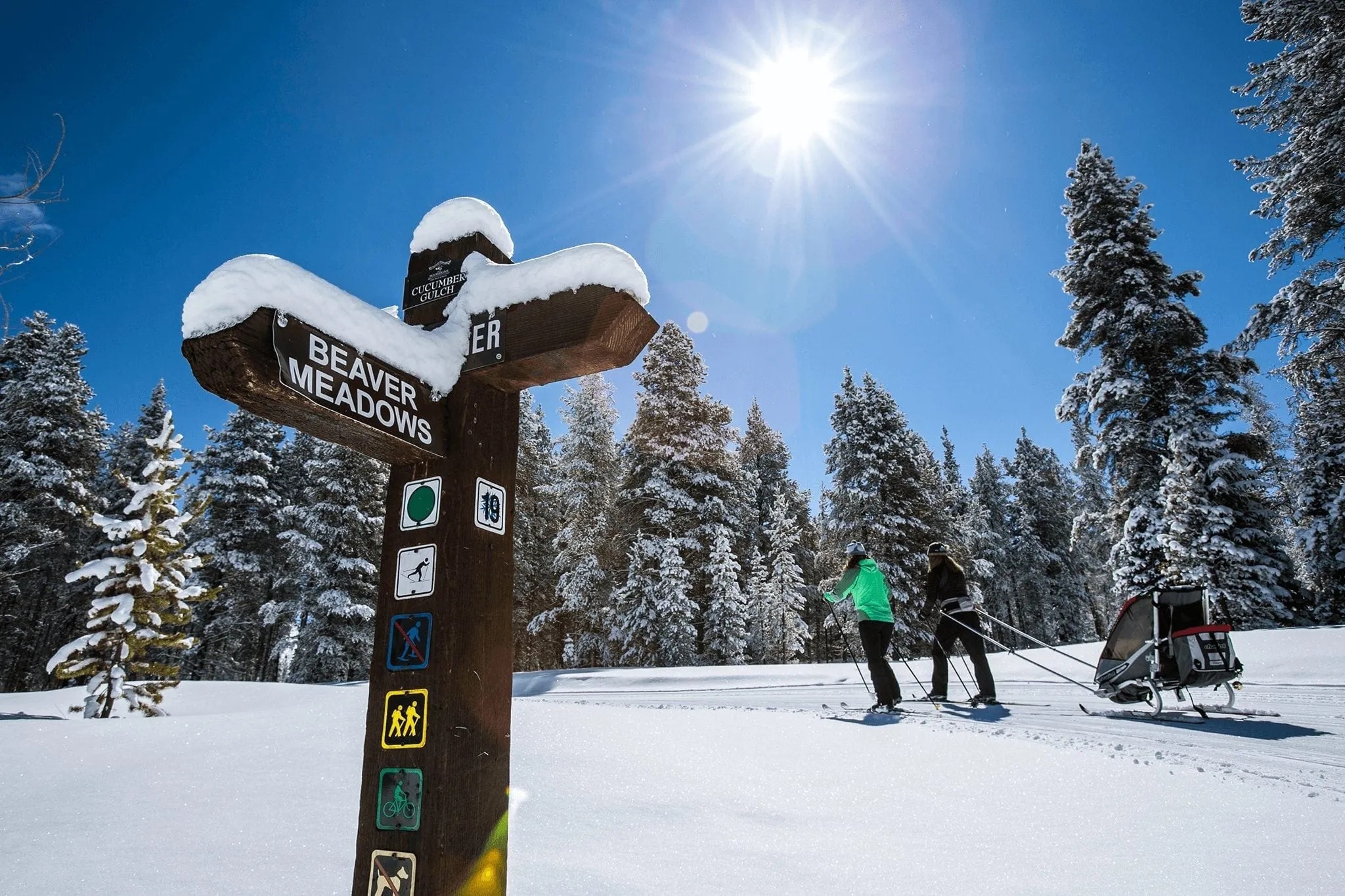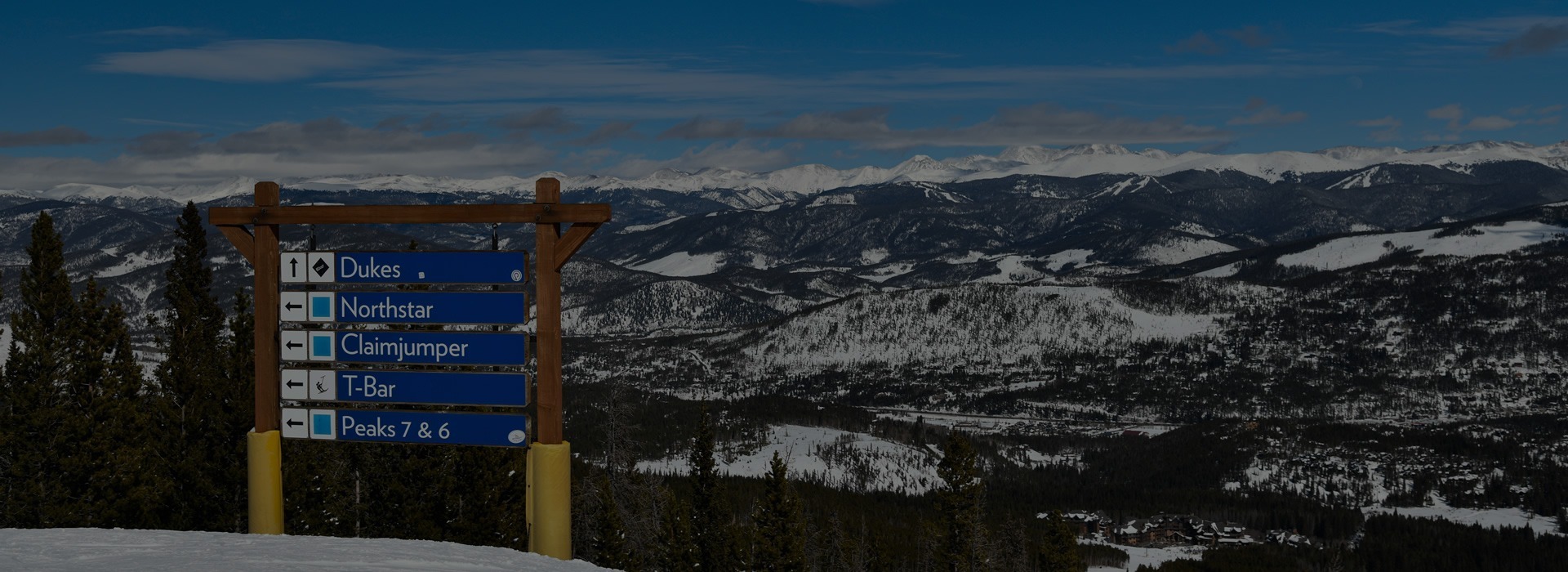
Discover the Enchantment of Winter Trails in Breckenridge
When the world silences itself beneath a blanket of snow, the trail system around Breckenridge transforms into something majestic—quiet, luminous, and brimming with promise. In this season, the crisp air fills your lungs, the snow underfoot muffles the bustle of everyday life, and each step becomes an invitation: to pause, to connect, to rediscover wonder.
Here’s your complete guide—crafted with care and attention—from gear and planning, to trail etiquette and wildlife encounters, so that your winter adventure in Breckenridge’s trail system becomes not just possible, but unforgettable.
1. Prepare to Embrace the Winter Trail
Winter trail usage isn’t just “summer trail with snow added.” It’s a different world. The daylight changes, the surface changes, your senses shift—and so must your preparation.
Footwear & Clothing
Begin from the ground-up: proper footwear is the single most important piece of gear, according to trail-experts for the town of Breckenridge. Whether you’re snow-shoeing, cross-country skiing, winter walking, or fat-biking, your shoes must • keep you warm • provide traction • protect you from snow and cold. If you’re renting equipment, ask the provider about footwear—that step often gets overlooked.
Above the feet: dress in layers. Choose synthetics or wool—fibres that let your body regulate heat whether you’re working hard or pausing to admire the view. Avoid cotton in winter; it stays damp and loses insulating ability.
Don’t forget a warm hat, gloves or mittens, and a neck gaiter or scarf—loss of body heat often happens around the neck and shoulders. Protect your eyes with dark lenses on sunny winter days. Bring snacks, sunscreen, water, and an extra layer in case the weather shifts.
If you’re bringing your dog
Yes, your four-legged companion can join the fun—but it means extra considerations: leash if required, poop-bags, water provision (snow alone isn’t enough hydration), possibly a dog jacket or paw-boots/wax. And remember: part of being a respectful trail user is picking up after your pup.
Why it matters
Winter conditions amplify everything—cold, wind, snow, isolation. But with good gear and thoughtful planning, what might seem daunting becomes pure possibility: a slower pace, deeper focus, an almost meditative connection to the trail.
2. Choose the Right Route for You
One of the joys of winter trail use is that many of the same routes you might enjoy in summer become transformed—it’s like visiting a familiar friend in a new light.
Trail Maps, Usage Guides & Planning
Most trails in the Breckenridge area are clearly marked with names and usage designations.If you’re unsure where to go, check out the Summit County trail map or Breckenridge trail map before heading out.
There are specific resources for Nordic skiing, snow-shoeing, winter hiking, and fat-biking: choose the guide that matches your activity and skill level.
Selecting a trail based on your goal
- Want a quiet snow-shoe experience? Find trails with good snow coverage and fewer competing uses.
- Interested in cross-country skiing? Look for groomed tracks and flatter terrain.
- Fat-bike enthusiast? Choose compacted trails suitable for the wide-tire approach (and check usage rules).
- Whatever your aim, align the trail to your ability and gear—so you arrive with excitement, not stress.
3. Know the Rules of the Trail (and Respect Them)
Because winter changes the environment so much, the etiquette and rules for trail use get added weight. Understanding them makes your outing smoother and safer—for you, for others, and for the land.
Yielding and priority
Trail users in winter follow a “yield triangle” similar to summer but adapted for snowy conditions.
- Fat-bikes yield to snow-shoers and cross-country skiers.
- Snow-shoers yield to cross-country skiers.
This hierarchy protects the snow surface and keeps everyone moving more harmoniously.
Surface conditions matter
- Snow-shoes and cross-country skis are buoyant—they float near the top of snowpack, making minimal disturbance.
- Winter hiking and fat-biking need a well-packed trail—uneven or freshly fallen snow causes holes, ruts, and a higher maintenance burden.
- One of the biggest issues: fat-bikes leaving ruts in soft or newly fallen snow. The guidance: if you’re leaving a rut, or have to push the bike, turn around and pick a different trail more suitable.
Best practices for courtesy and surface-preservation
- Use separate tracks when possible: don’t walk or bike on freshly groomed ski tracks because you’ll damage them.
- If the afternoon sun has softened the snow, avoid side-tracking or riding across soft areas—frozen ruts formed overnight become a major damage source.
- Follow posted signage: for example, some winter trails are closed to wheels; fat-bikes must use authorized trails only.
Why these rules exist
Snow is precious—it defines the season. The surface, the compacted layers, the grooming: they all support skiers, snow-shoers, winter hikers. Damaging them affects not only your trail experience, but others’ futures as well. Respecting the trail is part of the privilege of using it in winter.
4. Mind Your Wildlife Encounters
When the world softens under snow, the animals don’t stop moving—they often use the same corridors we do. In the Breckenridge area, the presence of moose, elk, deer and coyotes means staying alert and respectful.
Moose—majestic and potentially dangerous
The moose population in Colorado is growing—and yes, you might encounter one on winter trails. Because they prefer packed trails (they find it easier than deep snow), you could literally meet one crossing your path.
If you do: give it space. If it’s blocking the trail, calmly turn around and choose another route. Avoid earbuds or distractions—moose often move surprisingly quietly and you’ll want to hear them coming.
Elk and deer—beautiful but sensitive
Elk and deer might be seen on winter trails, especially near areas like Gold Run Nordic Center and the Breckenridge Golf Course.
They’re not usually dangerous—but they are vulnerable. Our presence can startle them, causing them to burn precious energy fleeing. Value their space, keep your distance, and maintain control of your pet.
Coyotes and your pets
Coyotes can pose a danger to pets in winter when food is scarcer. Keep your dog under voice and visual control while hiking. If you bring a dog, be especially attentive.
Why this matters
Trail use in winter is more than recreation—it’s sharing a season with the wild. When we trail with mindfulness, we protect the animals, preserve the ecology, and deepen our own connection with nature’s rhythm.
5. Your Winter Trail Experience—Optimized and Inspired
Now that you’ve got the gear, plan, etiquette and wildlife awareness in place, let’s talk about how to make the most of the winter trails in Breckenridge.
Embrace the magic of the moment
There’s something almost silent in snow-covered woods: the way footsteps sound different, the light reflects off the snow, the stillness of the trees. Take a moment to breathe it in. Whether you’re snow-shoeing boreas pass road with views of the Ten-Mile Range, or gliding across a groomed Nordic track—let the season slow you down.
Match your pace to the conditions
Winter trails are often slower, more deliberate. Ice, snow-pack variability, changing light—these all mean you’ll likely move at a more moderate pace. That’s okay. It’s part of the experience. Allocate more time, check trail conditions, be flexible.
Check conditions, plan your timing
• After fresh snowfall, some trails may be un-packed or unstable—especially for bikers. Waiting 3-4 days for compaction is sometimes wise.
• If snow is melting in the afternoon sun, ruts and soft patches can form—try to avoid riding or walking on soft snow so you don’t cause lasting damage.
• Allow daylight and weather shifts to guide you—winter days are shorter, storms can move in quickly.
Celebrate all the activity options
Whether your heart is set on cross-country skiing, snow-shoeing, fat-biking or winter hiking—the trail system supports all of these with the right planning. Winter doesn’t mean fewer options—it means different ones, richer in texture and atmosphere.
Leave the trail better than you found it
Pack out your trash (yes—even snack wrappers). Pick up after your dog (and make sure they’re hydrated). Respect the trail surface, respect the wildlife. Your footprints matter, especially in winter where leave-no-trace is both ethic and necessity.
6. Why Breckenridge Trails Are Worth It
In a world where outdoor resources are finite, the trails in Breckenridge deliver not just scenery, but a full sensory reset. The crisp mountain air, the pristine snow, the quiet of forests and ridges—there’s a restorative power here.
The local trail system is well-maintained, marked, and supported with guides and information so you don’t have to guess your way. Whether you’re visiting for a weekend or a full winter season, you’re welcomed with infrastructure, expert resources and a community of people who care.
7. Final Takeaways for the Savvy Winter Trail User
- Gear up wisely: from footwear to layers to hydration—winter demands respect.
- Choose your trail intentionally: match your activity and skill to the route.
- Follow etiquette & rules: yield properly, avoid damaging snow surfaces, stay in authorized areas.
- Respect wildlife: moose, elk, deer, coyotes—they’re here too. Keep space, stay alert.
- Slow down and appreciate: winter trail use isn’t about speed—it’s about presence.
- Leave no trace: the trails deserve your best version of yourself.
- Know your conditions and adjust: snow, sun, time of day—all change the game.
- Enjoy the magic: foothills, trees dusted with snow, expansive views—embrace the feeling.
Your Winter Trail Adventure Begins Now
Whether you’re strapping on snow-shoes, gliding on cross-country skis, exploring on a fat-bike, or simply walking a winter-quiet path—know this: each step can be a moment of connection. The snow quiets the world; the trail becomes intimate; the mountains become your companion.
So pack your gear, check the maps, clear your schedule, and step into the shimmering winter trails of Breckenridge. You’re not just recreating—you’re entering a place of stillness and wonder. With preparation, respect, and wonder in your heart—you’re going to have an experience you’ll carry long after the snow melts.
Embrace it.
Enjoy it.
And leave the trail better than you found it.
Breckenridge Transportation
Your Premier Airport Transfer to Colorado’s Top Resorts
Traveling to the heart of the Colorado Rockies has never been more comfortable or convenient. Vail Transportation — including Vail Shuttle, Vail Limo, and Vail Taxi Service from Eagle Vail Airport (EGE) — offers travelers a seamless, stress-free transfer directly from the airport to the most iconic ski and mountain destinations in Colorado.
We offer a range of supportive airport transportation services. Our team of chauffeurs can transport you to and from any domestic or international airport, including Denver International (DIA), Eagle County Regional (EGE), and all other airports in Colorado. We offer door-to-door service for our clients, meaning you can relax, knowing we’ll take you where you need to go. Our chauffeurs will help you load and unload your luggage, handle any tracking needs, and ensure an enjoyable and stress-free experience. For reliable airport transportation you can count on, look no further than Great Divide Transportation. Contact us today to get started!
We redefine what luxury travel means across Colorado. From Denver International Airport (DIA) to Aspen, Vail, Beaver Creek, Eagle County Regional Airport (EGE), and Breckenridge, our premium limousine service ensures every mile feels effortless and refined.
Step inside our fleet of modern luxury vehicles, where elegance meets technology and every detail is designed for your relaxation. Sink into plush leather seats, enjoy a quiet, smooth ride, and let the mountain views or city lights set the mood — all while we handle the rest.
We’re not just driving you from point A to point B; we’re elevating your travel experience. Our professional chauffeurs, punctual service, and commitment to excellence guarantee you’ll arrive on time, refreshed, and with style that leaves a lasting impression.
Whether you’re flying in for a corporate meeting or heading to the mountains for a special celebration, Vail limo service is your trusted partner in luxury transportation.
Why choose us…. Emmanuel and his team/garage are located at the intersection of I – 70 and HWY 40 in Empire Colorado; this is the 50 yard line between Denver International Airport and Colorado’s ski resorts. Our vehicles are all 2022 or newer full size GM SUVs and 170 high roof Mercedes-Benz Sprinters.
All vehicles are equipped with snow tires and are garaged kept / meticulously maintained. Our drivers are all federally background checked and have years and years of combined experience. We love Colorado, we love to ski, and would love to show you a great experience when choosing us.
✨ Travel beautifully. Arrive gracefully.
Contact our team today and let us make your next ride unforgettable.


